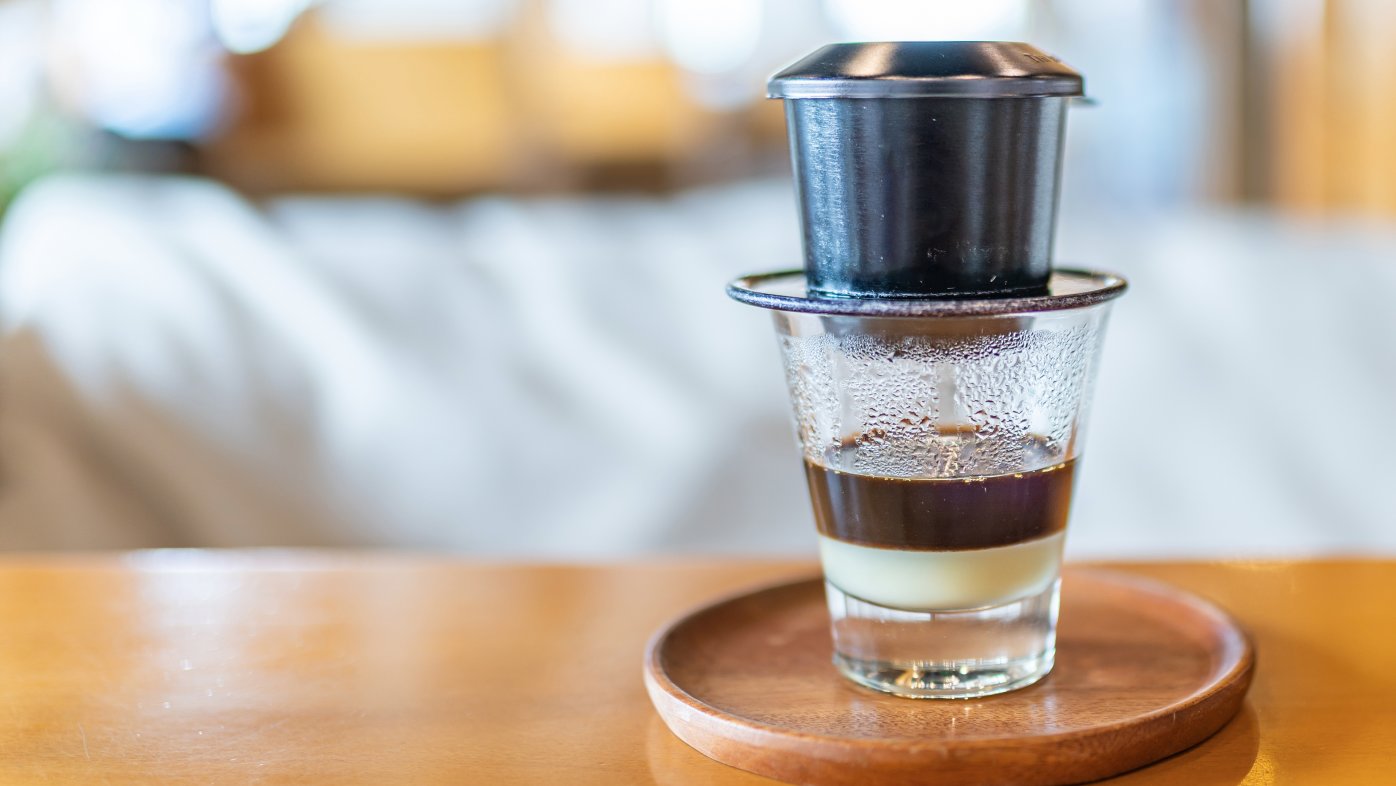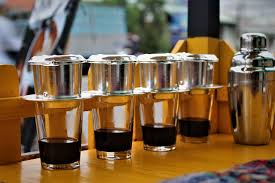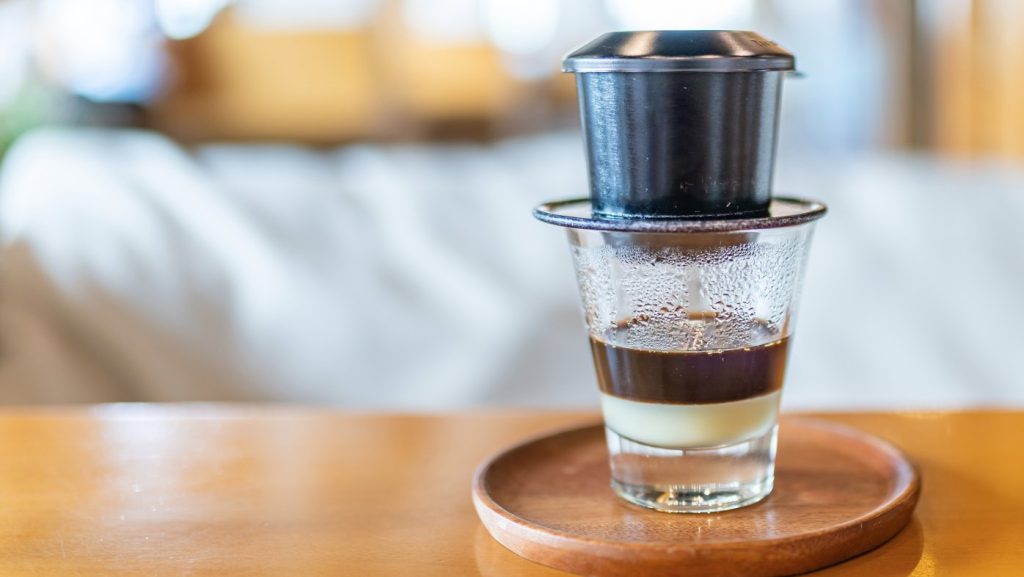Vietnamese coffee is a unique and delightful experience, known for its rich flavors and unique brewing methods. Originating from French colonial influence, coffee has become an integral part of Vietnamese culture. This article explores the history, brewing techniques, types, and cultural significance of Vietnamese coffee, particularly focusing on the famous “cà phê sữa đá” and “cà phê trứng.”

History and Cultural Significance

Coffee was introduced to Vietnam by the French in the 19th century. Over time, the Vietnamese adapted the drink to their tastes and local resources. The result is a distinctive coffee culture that stands out worldwide. Coffee shops in Vietnam, known as “quán cà phê,” are social hubs where people gather to relax, work, or chat. These cafes range from bustling urban spots to quiet, scenic hideaways.
Key Ingredients and Equipment

The essential ingredients for making traditional Vietnamese coffee are:
- Coffee Beans: Typically robusta beans, known for their strong flavor and higher caffeine content compared to arabica.
- Condensed Milk: Sweetened condensed milk is a staple in Vietnamese coffee, adding a creamy sweetness.
- Hot Water: Used for brewing the coffee.
- Ice: Essential for making iced coffee (cà phê sữa đá).
The main equipment used includes:
- Phin Filter: A small, metal drip filter that brews the coffee slowly.
- Glass or Cup: To serve the coffee.
Brewing Techniques
Cà Phê Sữa Đá (Iced Coffee with Condensed Milk)

Cà phê sữa đá is perhaps the most famous Vietnamese coffee. Here’s how to make it:
- Prepare the Phin Filter: Place the phin on top of a glass. Add 2-3 tablespoons of ground coffee to the phin.
- Bloom the Coffee: Pour a small amount of hot water over the coffee grounds to allow them to bloom. Wait 20-30 seconds.
- Brew the Coffee: Fill the phin with hot water. Place the lid on the phin and let it drip slowly. This process takes about 4-5 minutes.
- Mix with Condensed Milk: In another glass, add 2-3 tablespoons of sweetened condensed milk. Once the coffee has finished brewing, pour it over the condensed milk and stir well.
- Serve Over Ice: Fill a tall glass with ice cubes. Pour the coffee and milk mixture over the ice. Stir to chill and combine.
The result is a strong, sweet, and creamy coffee that is refreshing and satisfying.
Cà Phê Đen (Black Coffee)

Cà phê đen is a straightforward yet strong coffee. It can be enjoyed hot or iced.
- Prepare the Phin Filter: Place the phin on top of a cup. Add 2-3 tablespoons of ground coffee to the phin.
- Bloom the Coffee: Pour a small amount of hot water over the coffee grounds. Wait 20-30 seconds.
- Brew the Coffee: Fill the phin with hot water. Place the lid on the phin and let it drip slowly.
- Serve: Enjoy the strong, black coffee as is or over ice.
Variations and Modern Twists
Vietnamese coffee has several variations that highlight its versatility:
- Cà Phê Trứng (Egg Coffee): A unique creation made with egg yolk, sugar, condensed milk, and robusta coffee. The result is a creamy, custard-like foam atop strong coffee.
- Cà Phê Cốt Dừa (Coconut Coffee): Blends coconut milk with coffee for a tropical twist.
- Cà Phê Sữa Tươi (Coffee with Fresh Milk): Uses fresh milk instead of condensed milk for a lighter, less sweet drink.
The Taste Experience

Vietnamese coffee is known for its bold, robust flavor. The use of robusta beans gives the coffee a strong, slightly bitter taste, balanced by the sweetness of condensed milk or the richness of egg yolk. The slow drip brewing process extracts deep flavors, resulting in a rich and aromatic cup. The texture can range from smooth and creamy to light and refreshing, depending on the ingredients used.
Health Benefits
Vietnamese coffee offers several health benefits, primarily due to its high caffeine content and the antioxidants found in coffee beans. These benefits include:
- Increased Alertness: The caffeine provides a quick boost of energy and enhances mental alertness.
- Antioxidant Properties: Coffee is rich in antioxidants, which help fight free radicals and reduce the risk of chronic diseases.
- Enhanced Metabolism: Caffeine can boost metabolic rate and aid in fat burning.
- Mood Enhancement: Coffee consumption is often associated with improved mood and reduced risk of depression.
Coffee Culture in Vietnam

Vietnamese coffee culture is a unique blend of tradition and modernity. Coffee shops are an integral part of daily life, offering a space for social interaction and relaxation. The variety of coffee drinks available caters to different tastes and preferences. From the bustling streets of Hanoi to the scenic cafes in Da Lat, coffee is a unifying element in Vietnamese society.
Conclusion
Vietnamese coffee is a rich blend of culture, flavor, and tradition. Its unique brewing methods and distinctive ingredients set it apart from other coffee cultures around the world. Whether you prefer the classic cà phê sữa đá, the adventurous cà phê trứng, or any of the modern variations, Vietnamese coffee offers a delightful experience that is both refreshing and satisfying. Exploring Vietnamese coffee is a journey through the country’s history, culture, and culinary creativity, making it a must-try for coffee enthusiasts everywhere.
